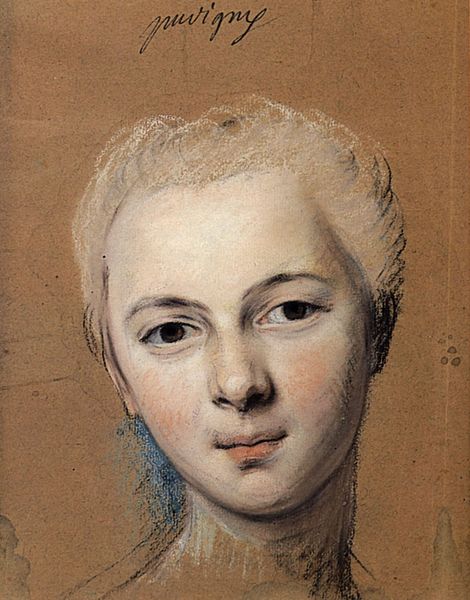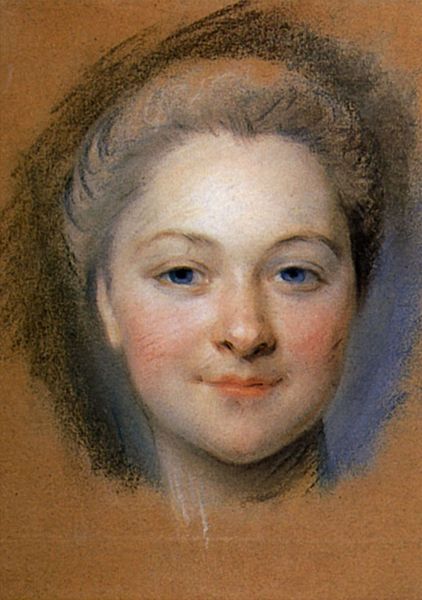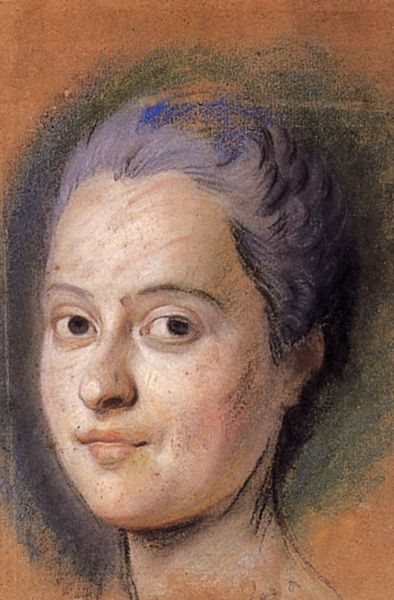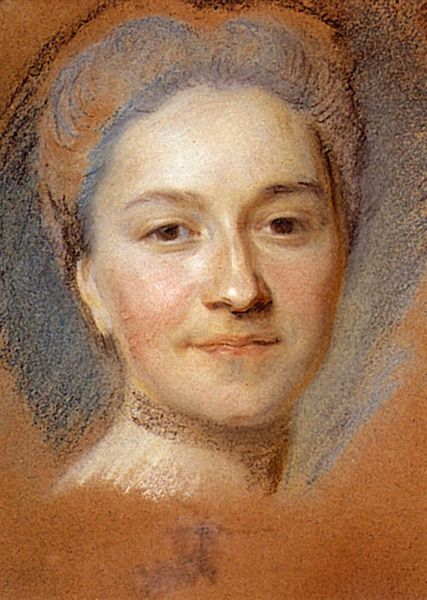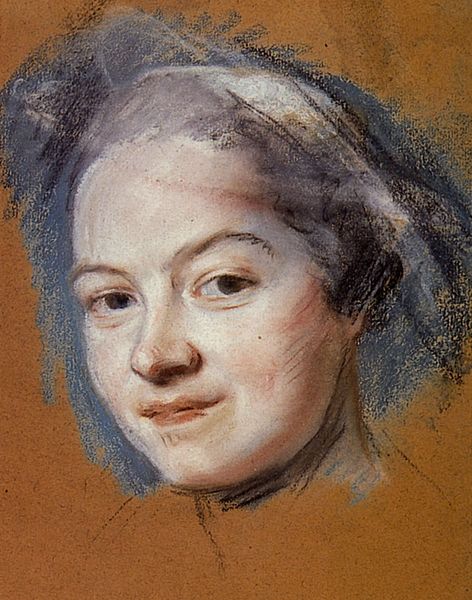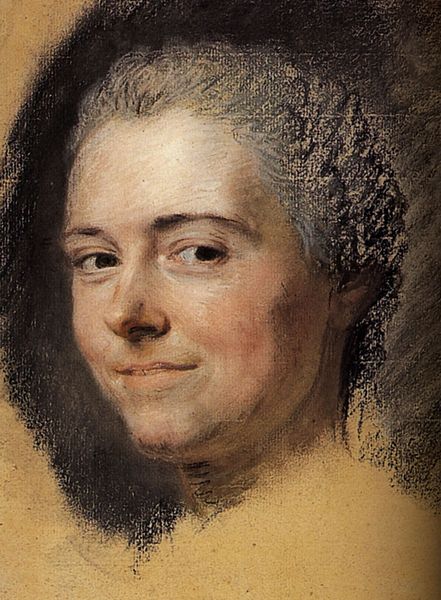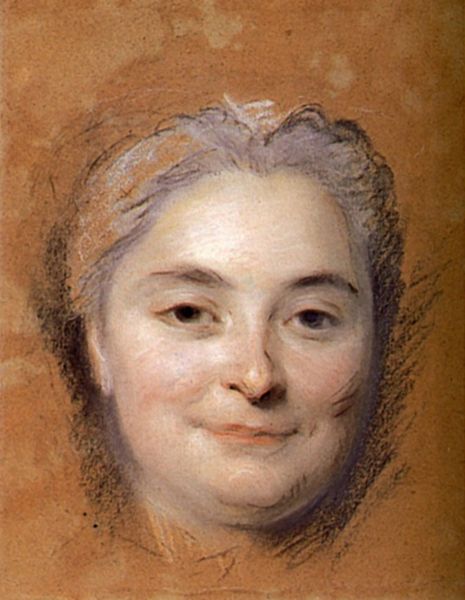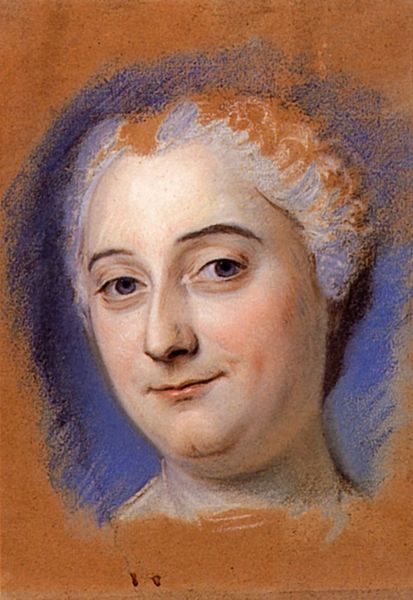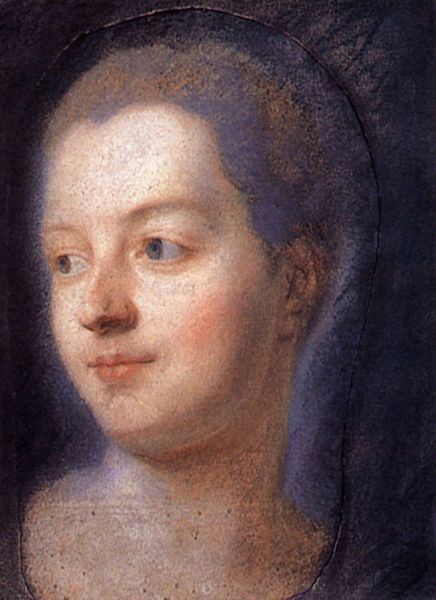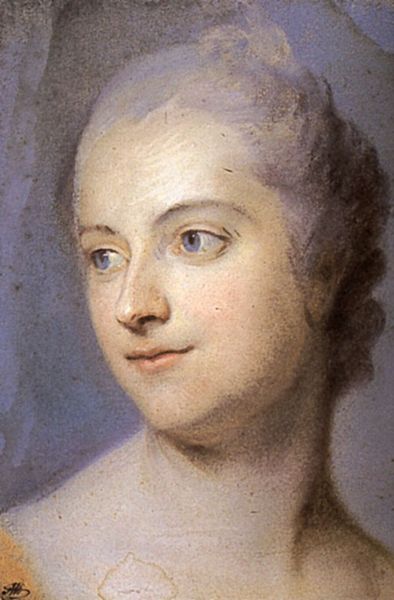
drawing, pastel
#
portrait
#
drawing
#
self-portrait
#
head
#
face
#
figuration
#
portrait reference
#
portrait head and shoulder
#
animal portrait
#
animal drawing portrait
#
portrait drawing
#
facial study
#
pastel
#
facial portrait
#
forehead
#
portrait art
#
female-portraits
#
fine art portrait
#
rococo
#
digital portrait
Copyright: Public domain
Editor: Here we have “Study of the Portrait” by Maurice Quentin de La Tour, likely a pastel drawing. The face is quite arresting; there's a certain directness in the gaze that's almost confrontational. What stands out to you in this piece? Curator: What grabs me is the pastel medium itself. Pastel allowed for a certain speed and directness, enabling artists to capture likeness and fleeting expressions efficiently. Consider the pigment. Where did it come from? Who processed it? How accessible was it? The layering of these materials, the very touch of the artist's hand, are all part of the labor and social network embedded in the creation of this work. Editor: I hadn't thought of it in terms of labor! I suppose I often just think about the final product, the aesthetic. Curator: Exactly, and that's where a materialist lens can be insightful. We're encouraged to look beyond just the image and ask: who benefitted from the creation of this portrait? Who was depicted in pastel portraits, and what did this say about their social standing and access to luxury goods? Furthermore, think about how this study might have been part of a larger workshop practice, feeding into a commercial portrait-making industry. Editor: So you're saying the material – the pastel, its availability, and the labor involved – reflect the socio-economic context of the artwork’s production. Curator: Precisely. Pastel as a material indexes certain kinds of transactions and practices. Think of the trade routes and exploitation that enabled the sourcing of raw materials needed to create pastels in brilliant colors during this period. That's the kind of context that really deepens our understanding of a seemingly straightforward portrait. Editor: That gives me a lot to think about. I’ll never look at a pastel the same way again! Thanks for illuminating the production process and socio-economic aspects that aren’t always immediately apparent. Curator: My pleasure! I learned something, too, from revisiting these details of material, class and labor with fresh eyes.
Comments
No comments
Be the first to comment and join the conversation on the ultimate creative platform.
